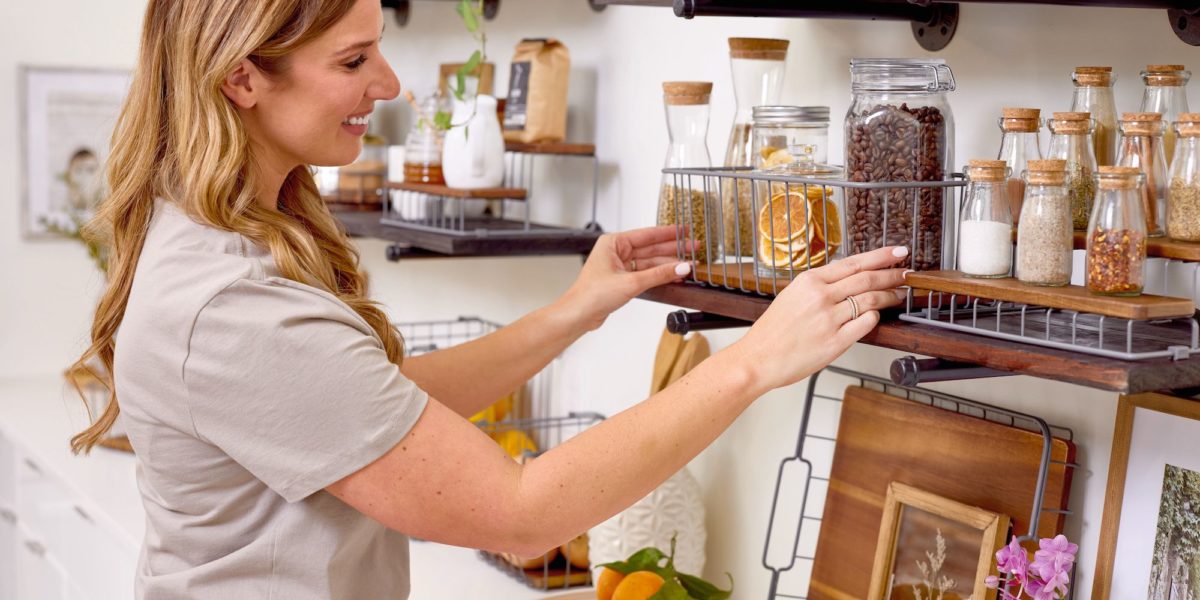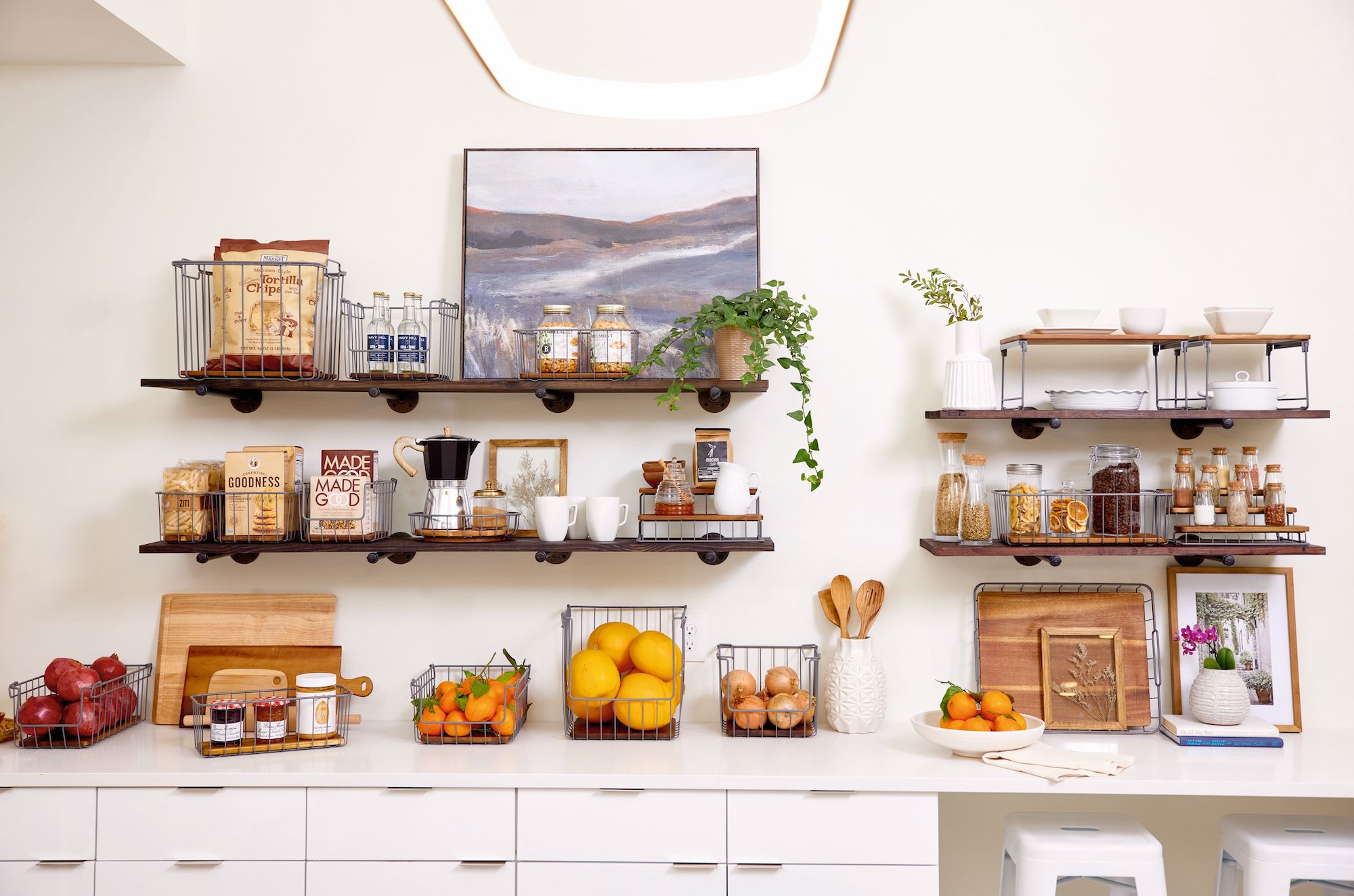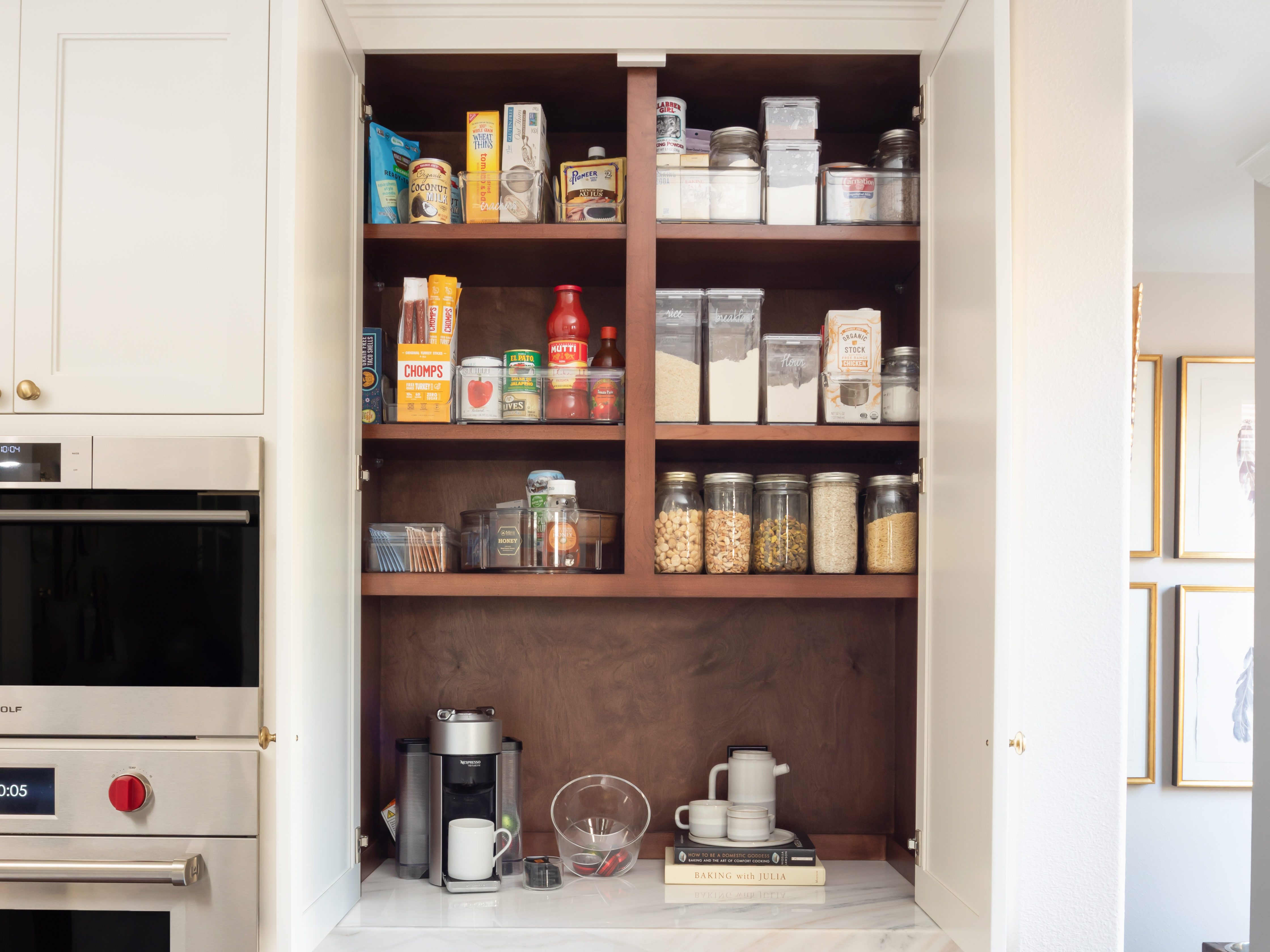
The Anti-Spring Cleaning Guide: How to Keep an Organized Pantry All Year
Ria Safford, the organizing expert behind Chrissy Teigen’s pantry, helps us keep our pantries clean beyond spring.

We only recommend things we love. If you buy something through our site, we might earn a commission.
Are you the only person who can find things in your pantry? I know that my whole wheat flour is behind a box of cereal on the second shelf and that somewhere on the third shelf is a single can of tomato paste. Pantries can be like purses—very personal. Though just because you may be the only one in there, it doesn’t mean it deserves to be kept in disarray.
I never realized my pantry organization only made sense to me until a friend couldn’t find anything for a simple stew. This not only made cooking together more strained, but digging through loose bags of spices and almost-empty oils also took time away from sitting around the dinner table.
“One of my clients says I’m selling time more than I’m selling organization by giving people time back in their day,” says Ria Safford, owner of RiOrganize and the expert who organized Chrissy Teigen’s pantry.
Safford recently released a collection of organizational items that can be used to create an easy-to-navigate pantry, supermodel or not. She also shared tips with us to keep clutter out of your pantry year-round, and not just when spring cleaning calls.
Get ready to purge your pantry of all those nearly empty bags of rice, expired sauces, and cans that will never get opened—Safford is helping us set up the pantry of our dreams. Set aside one day to clean out your pantry, as you’ll need to take everything out before making a plan to put it back. You don’t want your entire house covered in sugar and dry pasta!
Out with the Old (and Unused)

Thomas J. Story
“Step one for a pantry is taking everything out completely,” Safford explains. “When you see everything you have, it makes purging easy.”
Assess everything that comes out of the pantry and toss the things that don’t get used or have gone bad, Safford advises. You’ll also want to deep clean the shelves, because how often do you have a completely empty pantry?
When it comes to putting things back, “everything going back in needs to have a purpose,” she says. Make zones in your pantry that make sense for you based on what gets used the most, putting back your most-used items first in the easiest-to-reach spots of the pantry. Safford calls this step “space planning,” in which you decide where breakfast and dinner items, grains, snacks, and baking products will all live, depending on your priorities.
“My pantry is snacks galore, pasta, and grains that are used often as well as cans. People want their spaces to be functional but also want the added element of beautiful, and it’s possible to have both,” Safford says.
If you don’t bake often, put flour, sugar, baking soda, and powder further back. Take your organization a step further by creating compartments for different needs, like with storage containers. “If you’re not creating containment, things don’t have a place where they belong and they just get put back in wherever,” Safford shares.
Once you’ve got your zones planned out, consider adding baskets or turntables to make the most of the space. Safford’s collection of organizing tools includes wire baskets, which she says help hold people accountable because you can see through them—they aren’t just placeholders for disorganization. She also suggests having a few extra bins for miscellaneous ingredients that aren’t getting used often or are for a specific meal—so that can of coconut milk or almond paste has a home out of the way of your essentials.
“There are going to be some things you’re buying every time you go to the store but then sometimes you want something random and you should have a place for those things,” she explains.
Reorganize Seasonally, Not Just in Spring
“I’m a proponent of not waiting until the new year or spring cleaning to do something about your space,” says Safford. “Going from spring to summer, the things you need change and need to be adjusted. So, set aside time to reassess what you have.”
Post-holidays, you may have more baking ingredients than usual: cans of cranberry sauce, for example, or, as Safford chuckles, a single can of pumpkin puree that just never seems to get used. If you’re certain they will get used next year and stay good until then, give seasonal items a bin in the back after the holidays, or donate them.
“Pantries are always evolving and will need adjusting sometimes. You want to create a space that has flex,” Safford explains.

Bradley Hart
After winter and spring, you may use less stock or cans that get added to soups and stews, so have a spot that those can slide into to reveal a space for summer essentials.
The more you’re regularly assessing what you have and purging what you don’t need or won’t use, the less stressful maintaining your pantry will be. After summer, move the soups and stocks back into place, pull out that can of pumpkin purée and put it front and center so you don’t forget it’s there, and consider swapping zones for what will be utilized for the holiday season. Safford offers a collection of 14-inch, deep-wire bins that create deep storage options, ideal for seasonal ingredients that can be moved around with ease.
By making the most of your space with storage options like risers and stackable baskets, you can double your shelves’ storage ability. And with wire baskets that allow you to see into them, it’s easy to figure out what’s where without having to move everything around.
“Aesthetically, what we’ve made just didn’t exist. There are wire options of course but many look cluttered or are less elevated,” says Safford. Her line of pantry organizing items, made in collaboration with iDesign and available on Amazon, took her years of organizing expertise into consideration. “We wanted the colors we used to be universal and fit into any space, whether it be masculine, neutral, farmhouse, modern.”
The goal? For Safford, it’s the ability to “take a picture of my pantry and go to the store and reference what I need because I can see everything and what’s empty.”
Consider the Space You Have, Not the Space You Want
“You don’t have to have a 100,000-square-foot beachfront property to enjoy your kitchen,” Safford says. “But you can only store what you have room for.”
If, for example, your “pantry” is one of your kitchen’s larger cabinets, it’s not in your best interest to shop in bulk. Safford suggests that there is a “price for peace.”
“You need to adjust your habits to your home,” she shares. “You’d rather have to go get something later as opposed to having a cluttered big bulk bag stuffed somewhere.”

Serendipite Design and Molly Rose
Personally, I have a 20 lb. bag of rice from Costco that I’ve been using one cup at a time for the better part of a year now, a perfect example of the habit Safford suggests breaking. “We’re all about creating a routine-ready space and a pantry is not a personal space. It’s anybody in the house or [a] guest’s space to enter,” she explains. “You want anybody to be able to walk in and get what they need.”
Shop the collection on Amazon and follow Ria on Instagram for all of the organizing tips (pantry and otherwise) you didn’t know you needed.
